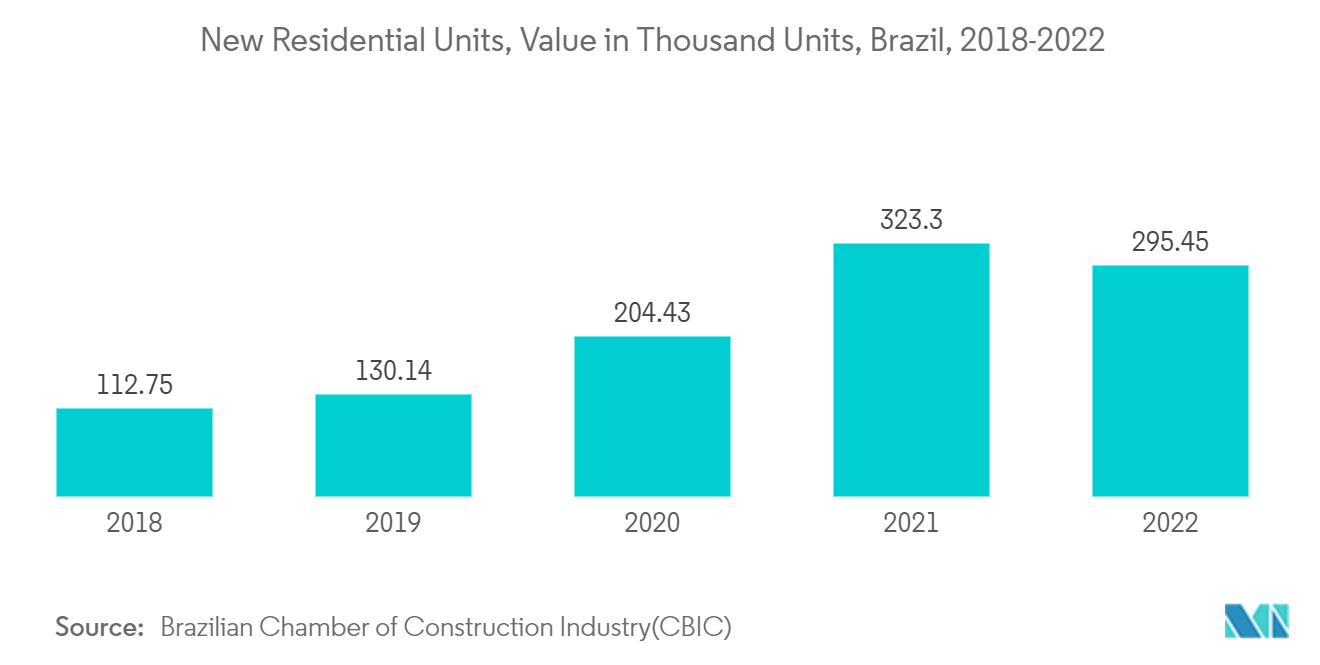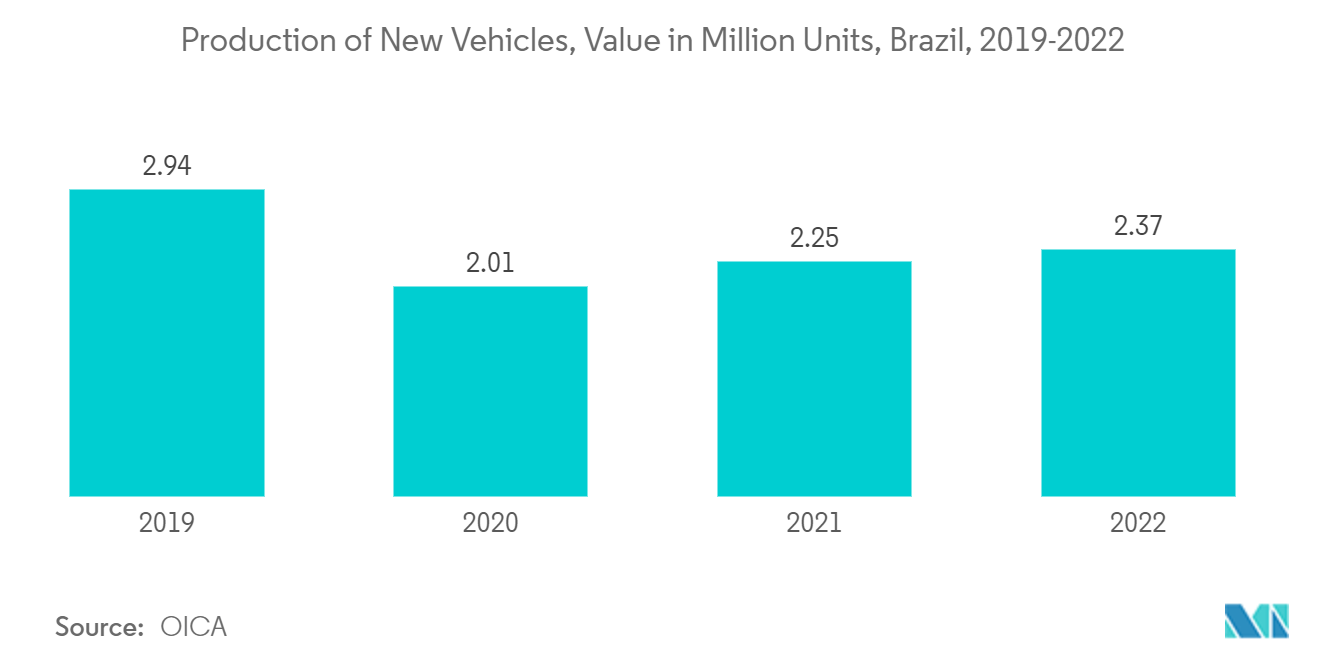Market Trends of South America Paints And Coatings Industry
Architectural Paints and Coatings to Dominate the Market
- Architectural paints and coatings are by far the largest segment in the paints and coatings industry. Architectural coatings are meant to protect and decorate surface features. They are used to coat buildings and homes. Most are designated for specific uses, such as roof coatings, wall paints, or deck finishes. No matter its use, each architectural coating must provide certain decorative, durable, and protective functions.
- Architectural coatings are used in applications for commercial purposes, such as office buildings, warehouses, retail convenience stores, shopping malls, and residential buildings. Such coatings can be applied on outer surfaces and inner surfaces and include sealers or specialty products.
- Brazil is one of the largest countries in the South that has seen a rise in investments for various construction projects in recent times.
- In August 2023, Under the Novo Programa de Aceleracao do Crescimento (Novo PAC), the government planned to invest USD 345 billion between 2023 and 2026 in the construction of various infrastructure and buildings in the country.
- The region is witnessing a notable shift in its commercial construction landscape. Notable projects like the Paulinia Data Center and Porto Alegre Data Center I of Brazil, initiated in 2023, are among the largest in the region.
- Several South American nations are rolling out initiatives to make housing more affordable for their growing populations. For Instance, in February 2023, Brazil relaunched its nationwide federal housing program, targeting low-income individuals. In October 2023, the World Bank approved a USD 100 million financing package for Ecuador, specifically aimed at bolstering affordable and resilient housing.
- Such trends in the region are expected to contribute to the growth of architectural coatings during the forecast period.

Brazil to Dominate the Market
- Brazil is expected to dominate in the region during the forecast period due to the presence of established automotive and construction industries and investments in the industrial sector.
- As per OICA, the production of automobiles in the country amounted to 2.37 million units in 2022, registering a growth of around 5% compared to the previous year. As per OICA, the total sales of vehicles in the country amounted to 1.83 million units in Brazil in 2022, as compared to 1.86 million units in 2021, registering a decline of around 1.9%.
- Passenger cars, light commercial vehicles, and heavy commercial vehicles witnessed a decline in 2022 sales in the country owing to the growing cost of vehicles. However, bus and coach sales registered the highest growth in the automotive segment, accounting for 23.4% in 2022.
- However, Brazil has the largest electric vehicle market in South America. In mid-January, Brazil’s Constitution and Justice Commission (CCJ) approved a bill prohibiting the sale of new petrol and diesel-powered cars in the country as of January 2030. Around 700 thousand EVs are expected to be circulating in Brazil by 2030.
- Furthermore, The Brazilian construction industry remained weak in March 2023, with activity and employment falling for the fifth month. However, the most recent data by the National Confederation of Industry (CNI), with the support of the Brazilian Chamber of Construction Industry (CBIC), indicate that the fall in activity was not severe and broad. Furthermore, the reduction in activity from February to March 2023 is the mildest in the series of declines that began in November 2022.
- The reduction in activity is ascribed to high energy and construction material prices and soaring inflationary pressures, as are high-interest rates, decreasing levels of demand, and excessive household debt. In March 2023, the building activity index was 49.5, marking the fifth consecutive month with a score less than 50. This was preceded by February scores of 47.6 and January 2023 scores of 45.9.
- The Brazilian furniture industry has been growing steadily over the past three years, and the demand for newly designed furniture has been high recently.
- Brazil is the sixth largest producer of furniture globally, and many Brazilian furniture companies and designers have invested in innovative solutions that speed up production, shipping, and delivery. As a result of these efforts and more, furniture exports grew 50.9% from 2020 to 2021, with 35% of Brazil’s exports in the furniture industry specifically destined for American stores.
- According to the Brazilian Association of Furniture Manufacturers (ABIMÓVEL), Brazil’s furniture industry is formed by 19,000 companies, 80% of which are concentrated in the country’s South and Southeast regions, led by the state of São Paulo and followed by the conditions of Rio Grande do Sul, Minas Gerais, Paraná, and Santa Catarina.
- According to IEMI Inteligência de Mercado, the country produced more than 367 million furniture units in 2022 compared to 405 million units in 2021. However, the furniture production value in Brazil amounted to approximately 65 billion Brazilian reals in 2022 compared to 68.04 billion Brazilian reals in 2021.
- Hence, with the growth in the construction, infrastructure, and automotive sectors, the demand for paints and coatings is expected to witness growth over the coming years.


